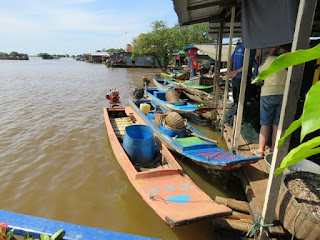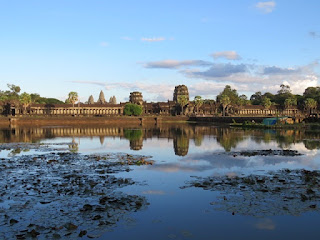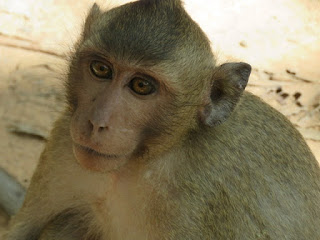Tuesday, December 17, 2019
China - Hong Kong
Thanks for traveling with us!
Sent from my iPad
Cambodia Day 6 part f
Sent from my iPad
Cambodia Day 6 part e
Sent from my iPad
Cambodia Day 6 part d
Sent from my iPad
Cambodia Day 6 part c
Sent from my iPad
Cambodia Day 6 part b
Sent from my iPad
Cambodia Day 6 part a
Sent from my iPad
Sunday, December 15, 2019
Fwd: How to play Sichuan Mahjong
Begin forwarded message:
From: Barbara Schwarz <bhs.schwarz@gmail.com>
Date: December 2, 2019 at 2:31:55 AM CST
To: Mark Svobodny <mass27@gmail.com>
Cc: Ida Sansoucy <iderann@q.com>, MARYANN WATTERS <pudley1920@comcast.net>, Cassie Zeng <cassiezmd@outlook.com>, marimerche9@yahoo.com, stravel80@aol.com, kentm@massie-associates.com, fredschlichting@hotmail.com, phxwilsonschris@aol.com, Joanie Broder <jrb51@comcast.net>, cal3419@yahoo.com, maryn4949@gmail.com
Subject: Re: How to play Sichuan Mahjong
So long Mark, here's a goodbye hug we missed as you left!Sent from my iPhoneOn Dec 2, 2019, at 11:03 AM, Mark Svobodny <mass27@gmail.com> wrote:It was great traveling with all of you. Now on to Hong Kong where it's a chilly 6p degrees--brrr!On Mon, Dec 2, 2019, 9:40 AM Ida Sansoucy <iderann@q.com> wrote:thanks for sharing this blog. i look forward to some laughs!A great group. IdaFrom: "Maryann Watters" <pudley1920@comcast.net>
To: "Cassie Zeng" <cassiezmd@outlook.com>
Cc: marimerche9@yahoo.com, stravel80@aol.com, kentm@massie-associates.com, "I A SANSOUCY" <iderann@q.com>, fredschlichting@hotmail.com, phxwilsonschris@aol.com, mass27@gmail.com, "Joanie Broder" <jrb51@comcast.net>, "Barbara Schwarz" <bhs.schwarz@gmail.com>, cal3419@yahoo.com, maryn4949@gmail.com
Sent: Sunday, December 1, 2019 5:17:05 PM
Subject: Re: How to play Sichuan MahjongFor anyone interested in the blog created along the way, here is the link www.pudley1920.blogspot.com.There is a technical problem at the moment ( thanks China ) so only half of the entries are posted. Hoping to get this resolved in the next week or so.Thank you all so much for your interest and you all were so much fun travel companions!MaryAnnAka MASent from my iPhoneOn Nov 30, 2019, at 5:13 PM, Cassie Zeng <cassiezmd@outlook.com> wrote:
How to play Sichuan Mahjong:
There are 108 tiles together, three types, crack, bamboo and dot. Four same pieces of each tile. Usually 4 people play and maximum 5 , at least 3. Rules as follow :
Shuffle all the tiles: it doesn't mater if the tiles are covered or not .
Built the Great Wall : built the tiles in front of yourself and it doesn't matter how many tiles you built , because it will be used as a bank . Everybody will take the tiles from the bank when the game starts.
Throw the dice and the person who get the biggest number will be the one who start the game. Usually we will leave several tiles on the right and take them at the end of the game. How many tiles leave for the end , we follow the small number on the dice.
Everybody take 4 pieces of tiles for three times until everybody get 12 pieces of tiles and the first person who starts the game take another two pieces . Remember : you need to jump :) The other 3 people take one more tile.
You should always have 13 tiles in your hand and the 14th one decide you win or not. Your target should be ABCABCABCABCDD or 7DD . ABC means 3 of a kind or 3 same type tile in a row .
After the first person discard , we go clockwise , and the second person will pick one more , then discard .
When can you Peng ? When someone throw the dice and you happen to have a pair of it (DD) in your hand , you can call out : Peng . And you take the tile from the table and put the three pieces aside to show people. Then you need to discard one . The person after you (clockwise ) will get the chance to take one more tile from the bank and it doesn't matter the original order. Which means, there maybe one or two people are skipped one chance .
P.S. you can always Peng doesn't matter whether it's your turn or not , as long as you have DD in your hand . Another two confusing parts are :
- You can Peng only if you already have a pair in your hand to make a AAA not ABC. But when it's Mahjong , it doesn't mater whether it's AAA or ABC.
- When you take tiles from the bank to have a AAA , you don't need to put them down to show people. You put them down to show people only when it's Peng.
When you take your 14th tile from the bank and make Mahjong , everybody should pay you . If someone discards the piece to help you making Mahjong , only the person should pay you. When someone makes Mahjong , the game finishes. When we start a new turn, we start from the side who won last time. So from the second round , only the winner throw the dice and decide where to take the tiles (by following the small number on the dice)
History of Mahjong :
Mahjong was invented by Chinese people in Ming dynasty around 400 hundred years ago. There was a fleet of China went to other countries to promote Chinese culture ( the real reason was to look for a person who may threat the position of the emperor)
The generals and soldiers were on the sea for long long time . Most of them become homesick and bored ... so Mahjong was invented for them. Mahjong Literally means : Entertain the generals in Chinese . That's why we have bamboo , cookie , and Chinese characters and north , south ,wind for the tiles ( some region of China play 4 types of tiles ,which make the total number 144 )
You can always make the game more complicated by many ways. For example, you can make the rule like this : when you win , you can only have 2 types in your hand instead of 3 types. You need to decide at the beginning of the game, which type you want to get ride of and you can't change your mind afterwards.
Thank you for joining Cassie's Mahjong lesson and hope you will have fun with families and friends :)
Cambodia Day 5 part g
So many temples, so little time. We visited Baphuon and Phimeamaks temples then on to the terrace of the elephants. The king and queen would be peached on the terrace to watch games being played by elephants using a water buffalo like we would us a ball in sport. That had to be interesting, not nice to the water buffalo, but interesting.
Sent from my iPad
Cambodia Day 5 part h
Cambodia Day 5 part f
Cambodia Day 5 part d
There is wildlife in Angkor. They are cleverly named, Angkor Wat Monkeys. Who knew... Dragon flies are there too. Maybe their name is Angkor Wat Dragon fly.... 😉


















































